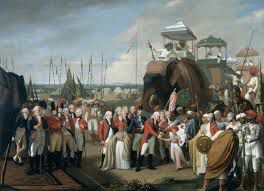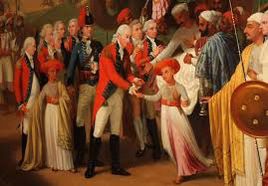LORD CORNWALLIS AND HIS JUDICIAL REFORMS PART 2
- Legal Aesthetic

- Sep 30, 2021
- 2 min read
Updated: Dec 17, 2022
JUDICIAL PLAN OF 1790
1. Reorganisation of districts into divisions -
Districts were divided into four divisions.
That was *Murshidabad
*Calcutta
*Dacca
*Patna
2. Moffusil Faujdari courts were abolished and replaced by the Court Of Circuit.
Court Of Circuit -
*Established at each of the four divisions
*It was presided by two servants.
*It was assisted by Muslim law officers that is Qazi and Muftis.
*It was a moving court.
*It used to move from district to district in the respective divisions to solve criminal cases.
*Visited each district of their divisions twice a year.
3. There was an increase in the salaries of judges.
4. Collector was responsible for making reports of working of the court.
5. The post of Nawab was abolished and presided by Governor-General in council.
6. Court fees - The system of court fees was introduced to reduce the burden on the courts. Fees were charged for pleaders of the court and for calling the witnesses to the court.
7. Questionnaires were sent to the Magistrates.
Defects in the Plan of 1790 :
1. The questionnaire sent to the Magistrates revealed the evils of the criminal judicial system.
These evils were -
1. Defects in the Constitution of criminal courts.
2. The gross defects in the Muslim law of crimes.
3. He resolved to abolish the authority of Nawab over the criminal Judicature and transferred the administration of criminal justice from Muslim law officers to the company's legal servants.
4. Court of circuits was overburdened with cases that caused the delay in moving from one district to another.
5. Lots of collective power of administration and judiciary vested with a collector which made him abuse his power.
JUDICIAL PLAN OF 1793 -
1. Reintroduction of separation of power - It means separation of powers of the Executive and the Judiciary. Now the collector was only responsible for the collection of revenue and not for deciding cases arising out of revenue matters.
2. Mal Adalats were Abolished - All powers and pending suits of the revenue courts were now transferred to Mofussil Diwani Adalats and this was not tried by the collector.
3. Now the Executive were subjected to Judicial control and provisions of checks and balances. Governor-General and his council were subjected to judicial control.
4. Indian natives had to sign a bond with the British subjects in agreeing to go to court.
5. Establishment of the provincial court of appeal at the four divisions.







Comments